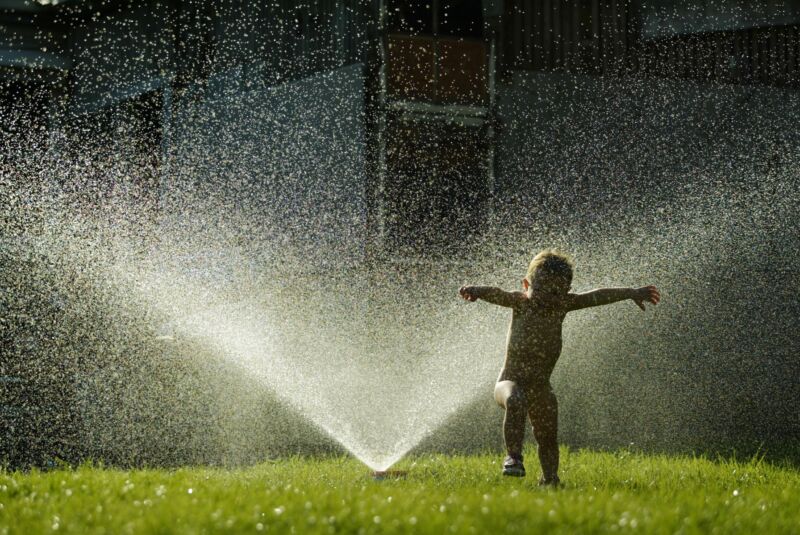
In 1989, a metropolis in Utah upgraded its ingesting water system, placing in a complete new system and repurposing the previous one to provide low cost untreated water for irrigating lawns and placing out fires. That meant that the handled water appropriate for ingesting flowed from new spigots, whereas untreated water gushed from the previous ones. Many years glided by with no obvious confusion; residents appeared clear on the 2 completely different water sources. However, in line with an investigation report printed lately by state and county well being officers, that native information acquired diluted as new residents moved into the world. And final summer time, the confusion over the conduits led to an outbreak of life-threatening diseases amongst younger youngsters.
In July and August of 2023, state and native well being officers recognized 13 youngsters contaminated with Shiga toxin–producing Escherichia coli (STEC) O157:H7. The kids ranged in age from 1 to fifteen, with a median age of 4. Youngsters are usually at excessive threat of extreme infections with this pathogen, together with older folks and people with compromised immune techniques. Of the 13 contaminated youngsters, seven have been hospitalized and two developed hemolytic uremic syndrome, a life-threatening complication that may result in kidney failure.
Preliminary genetic analyses of STEC O157:H7 from two of the youngsters prompt that the youngsters’s infections have been linked to a standard supply. So, well being officers rapidly developed a questionnaire to slim down the potential supply. It quickly turned clear that the irrigation water—aka untreated, pressurized, municipal irrigation water (UPMIW)—was a commonality among the many youngsters. Twelve of 13 contaminated youngsters reported publicity to it in some type: Two stated they drank it; 5 performed with UPMIW hoses; three used the water for inflatable water toys; two used it for a water desk; and one ran by way of sprinklers. None reported consuming fruits or greens from house (noncommercial) gardens irrigated with the UPMIW.
The report on the investigation, printed within the Facilities for Illness Management and Prevention’s Morbidity and Mortality Weekly Report, didn’t identify the town in Utah. However press releases from a county well being division recognized the affected metropolis as Lehi, about half-hour south of Salt Lake Metropolis.
Additional genetic testing of STEC O157:H7 isolates linked the entire youngsters’s infections collectively, in addition to to water from 5 of 9 UPMIW publicity websites and samples from the reservoir the place the irrigation water is sourced. Microbial supply monitoring indicated that the contamination may have come from the feces of birds or ruminants.
The county well being division and the town put out press releases and informational mailers. They warned residents concerning the dangers of UPMIW, telling them to not drink it or let youngsters play in it. “Don’t use irrigation water for bounce homes, swimming pools, slip-n-slides, or every other leisure actions. It’s common for youngsters to swallow or get water of their mouths whereas taking part in.”
The notices additionally stated that the CDC really helpful towards watering lawns with the water, although the county suggested residents to merely “use warning” when permitting youngsters to play on grass irrigated with UPMIW. “Control them,” the advisers warned, and attempt to forestall them from placing their fingers or something from the garden of their mouths. “E. coli is hardy and may stick.”
This isn’t the primary time that irrigation water has been linked to outbreaks. In 2010 and 2015, two different Utah cities reported campylobacteriosis outbreaks linked to cross-connections between UPMIW and ingesting water strains.
The researchers say such outbreaks might be prevented by efforts to forestall contamination in irrigation water, reminiscent of treating water, cleansing reservoirs, and overlaying them. And, in fact, clearly labeling irrigation water and retaining residents knowledgeable about its risks are key to stopping infections.
